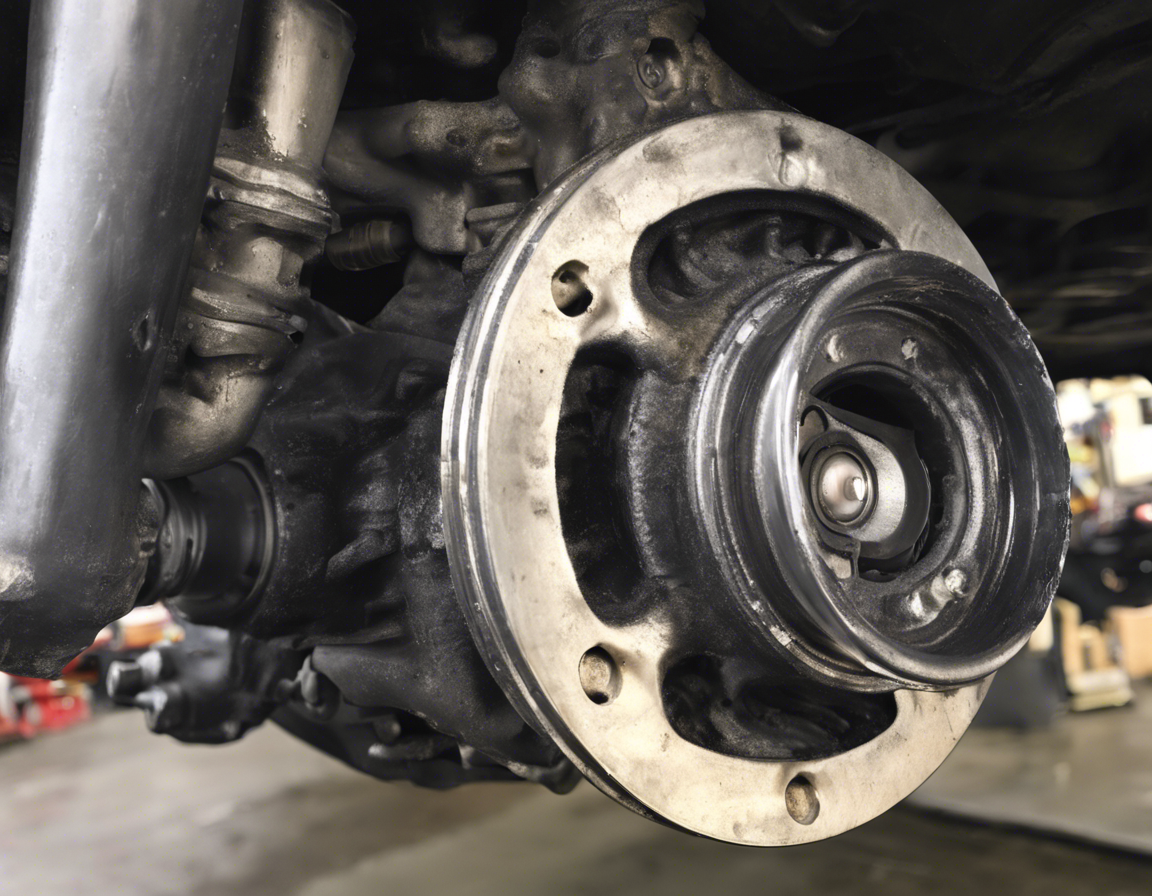Rear Differential Leaks: Causes and Solutions
Rear differential leaks can be a common issue for vehicles, causing potential damage if not addressed promptly. Understanding the causes of these leaks and how to effectively resolve them is crucial for maintaining the longevity and performance of your vehicle. In this article, we will delve into the various reasons behind rear differential leaks and provide comprehensive solutions to help you mitigate the issue.
What is a Rear Differential Leak?
The rear differential is a vital component of a vehicle’s drivetrain system, responsible for transferring power from the engine to the wheels. A rear differential leak occurs when lubricant or fluid escapes from the differential housing, leading to a decrease in fluid levels and potential friction within the differential.
Causes of Rear Differential Leaks
Several factors can contribute to rear differential leaks, including:
1. Worn or Damaged Seals: Seals around the differential housing can wear out over time, leading to leaks. These seals are crucial for maintaining the integrity of the differential fluid.
2. Loose or Damaged Drain Plugs: Drain plugs on the differential housing can become loose or damaged, causing fluid to seep out gradually.
3. Cracked Housing: A cracked or damaged housing can also result in leaks. This can occur due to accidents, extreme weather conditions, or old age of the vehicle.
4. Overfilling or Underfilling: Incorrect levels of differential fluid can lead to leaks. Overfilling puts excess pressure on the seals, while underfilling can cause lubrication issues.
5. Driving Conditions: Rough terrain, off-road driving, or towing heavy loads can put additional stress on the differential, increasing the likelihood of leaks.
Solutions for Rear Differential Leaks
Addressing rear differential leaks promptly is crucial to prevent further damage and maintain the performance of your vehicle. Here are some effective solutions:
1. Seal Replacement: If worn or damaged seals are the culprit, replacing them is essential. This is a relatively straightforward fix that can be done by a professional mechanic.
2. Drain Plug Inspection: Ensure that the drain plug is tight and in good condition. Replace the plug if necessary to prevent leaks.
3. Housing Repair: In cases of a cracked or damaged housing, it may be necessary to repair or replace the housing entirely. This is a more involved process and should be handled by a certified mechanic.
4. Fluid Level Adjustment: Check the differential fluid level and ensure it is within the recommended range. Top up or drain excess fluid as needed to prevent leaks.
5. Regular Maintenance: Perform regular inspections of the rear differential as part of your vehicle maintenance routine. Catching leaks early can prevent costly repairs down the line.
FAQs about Rear Differential Leaks
1. How do I know if my vehicle has a rear differential leak?
– Look for signs of fluid pooling underneath the vehicle, a burning smell, or unusual noises coming from the rear end.
2. Can I continue driving with a rear differential leak?
– It is not recommended to drive with a rear differential leak, as it can lead to extensive damage to the drivetrain system.
3. How much does it cost to repair a rear differential leak?
– The cost of repair can vary depending on the extent of the damage and the specific components that need replacement. It is best to consult with a mechanic for an accurate estimate.
4. Can I fix a rear differential leak on my own?
– While some minor leaks can be addressed by DIY enthusiasts, it is generally recommended to seek professional help to ensure proper diagnosis and repair.
5. How long does it take to repair a rear differential leak?
– The repair time can vary depending on the complexity of the issue and the availability of parts. In most cases, a rear differential leak repair can be completed within a few hours to a day.
Rear differential leaks should not be ignored, as they can lead to severe damage and safety hazards. By understanding the causes of these leaks and implementing the appropriate solutions, you can ensure the optimal performance and longevity of your vehicle. Regular maintenance and inspections are key to detecting and addressing rear differential leaks promptly. Consult with a qualified mechanic for professional assistance in diagnosing and repairing rear differential issues.

